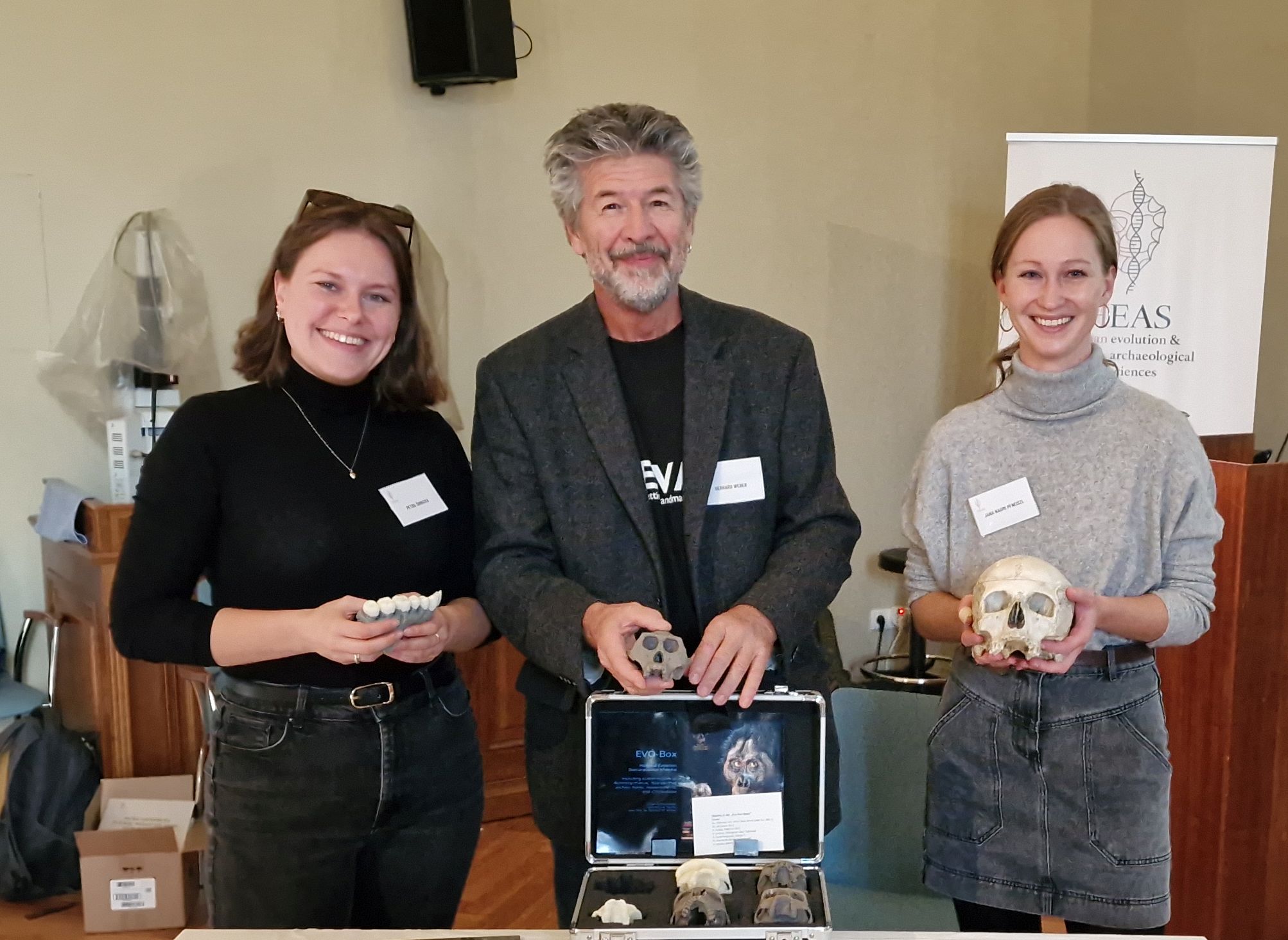HEAS member Gerhard Weber starts a new FWF Project to study the 3D morphology of human postcanine teeth
More On Article
- HEAS Members Travel to See the Lucy Skeleton - In Europe for the First Time
- HEAS Member Michael Doneus Receives Award For Contribution to Archaeology
- HEAS Seminar Series Speakers Announced
- Call for Papers: Calling all Palaeolithic and prehistoric researchers using GIS!
- HEAS Deputy Head Ron Pinhasi and MINERVA Team Publishes on Polymer Length

HEAS member Gerhard Weber starts a new FWF Project to study the 3D morphology of human postcanine teeth.
Petra Simkova will be employed as PostDoc, Jana Pfneiszl will start a PhD in the project.
In this project we undertake the first comprehensive 3D study of human teeth, more precisely of the tooth crowns of canines, premolars, and molars from the upper and lower dentition. We will also include milk teeth. Despite the long history of dental research in anthropology and medicine, progress in studying the three-dimensional geometry of teeth has only been made recently. How the 3D shape and size of individual tooth types are related to each other, how they vary between different human populations, and which individual regions of these teeth show more or less variation remains largely unknown. This project fills the gaps in our knowledge on human dental anatomy, provides comparable data, and lays the foundations for future work to unravel the associations between teeth and genes.
We have defined four major aims: 1) Investigate the 3D shape and size variation of the upper and lower dentition in a geographically diverse sample of modern humans, 2) study the shape variation in different tooth regions, namely those regions that touch each other during chewing and those which do not touch, 3) examine the 3D shape relationships between different tooth types within the jaws (e.g., between upper molars and upper premolars, etc.) and between the jaws (e.g., between upper and lower molars, etc.), and 4) build a comparative 3D data base of the human dentition.
This project will predominantly use state-of-the-art micro-computed tomography imagery to analyse 3D shape and size of tooth crowns, but also include a catalogue of non-metric traits and enamel thickness measurements. 3D studies focusing on the modern human permanent and deciduous dentition from the canines to the wisdom teeth are not available, and neither is such a 3D dental database openly accessible. This will be the first project describing the shape relationships between neighbouring and opposing human teeth in 3D. The results will have large impact on the knowledge about the development of the human dentition and represents relevant groundwork for understanding the link between development and genetics. Results are important for the fields of human functional anatomy, biology, palaeoanthropology, dentistry and orthodontics, biomechanical modelling of teeth, and quantitative genetics. They will help us to design, for instance, better implants or to understand, how the configuration of tooth reliefs formed in the course of evolution.
The PI Gerhard Weber has a long experience in this kind of research and is well networked within the national and international scientific community. One Post-doc and one PhD will work in the project for three years. The Natural History Museum Vienna, the University of Bologna, the Senckenberg Research Institute Frankfurt, and the Tel Aviv University are cooperation partners.